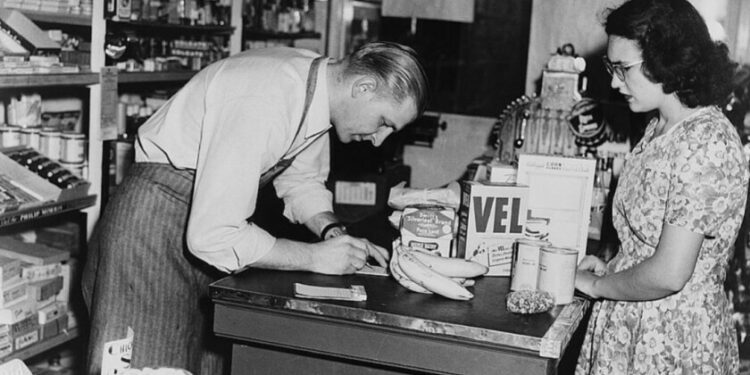Portrait of Minor Cooper Keith, America’s “Banana King,” founder of the United Fruit Company, the precursor for Chiquita, became the uncrowned king of Central America; “He sneezes and president, whether general or lawyer falls… he rubs his behind on his chair and a revolution breaks out,” according to the book “Business of Empire” by Jason M. Colby.
Contributed / US Library of Congress
Before Keith became America’s banana king, he dropped out of school, found work in a Brooklyn, New York store, then tried his hand at cattle ranching,
according to newspaper accounts and the United Fruit Company’s
website. At the time, railroad expansion was a cut-throat business, and he joined his brother and uncle in Costa Rica to work on the government-funded Atlantic Railway in 1871.
Not long after Keith’s arrival, his uncle,
Henry Meiggs, known as a hustler
in San Francisco, turned the government contract over to his nephew, leaving him in complete control.
The greatest problem Keith faced was a steady labor supply willing to work in hot, malaria-infested jungles rife with poisonous snakes and tarantulas,
according to “Business of Empire”
by Jason M. Colby.
Costa Ricans knew the land, and refused to work, so Keith was forced to import workers — white men from New Orleans — to earning $1 a day, a high wage in the late 1800s. Not long after arrival, the workers deserted and died off in such high numbers that Keith persuaded the Puerto Rican government to allow him to bring in immigrants from China and the West Indies, which in 1872 was illegal.
Initially, Keith’s company favored Asian contract laborers — called “coolies” at the time — and he viewed them as company-owned assets, according to “Keith and Costa Rica” by Watt Stewart.
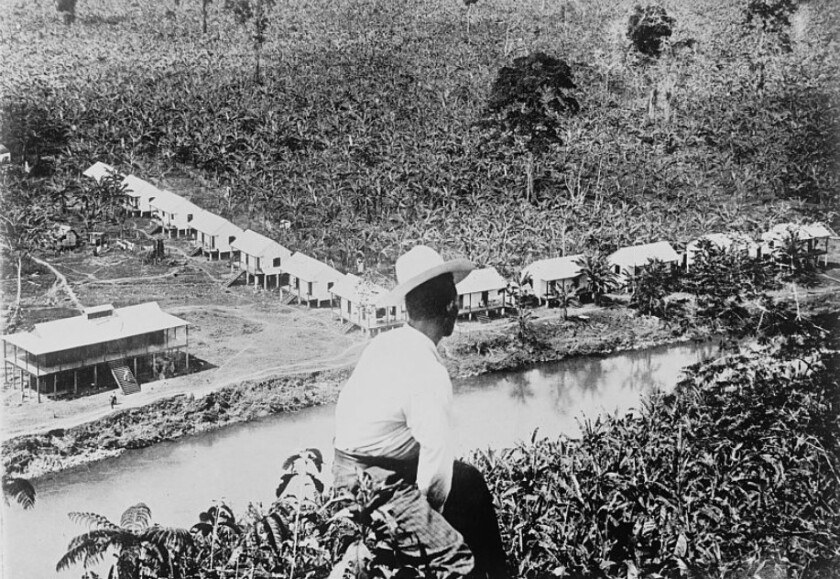
A man overlooking a banana plantation in Costa Rica in the early 20th century.
Contributed / US Library of Congress
They arrived indebted and in servitude to Keith’s railroad company.
Before laying 25 miles of track, more than 4,000 workers died, and by 1876 the Costa Rican government ran out of money, Colby wrote. The national vision of the Atlantic Railway was in jeopardy and investors backed out.
Knowing that if he could finish the Atlantic Railway he could transform the Caribbean coast into his own colonial domain, Keith became creative.
He used the Costa Rican government’s desperation to force the country into a compromise: a 99-year lease on the railway and 800,000 acres of land, roughly 7% of the national territory. In exchange, Keith would complete the railroad.
“These concessions laid the foundation for Keith’s and later United Fruit’s power in Costa Rica,” according to Colby.
Likened to Belgium’s King Leopold II railroad and rubber monopolies in the Congo, Keith pushed his workers to death.
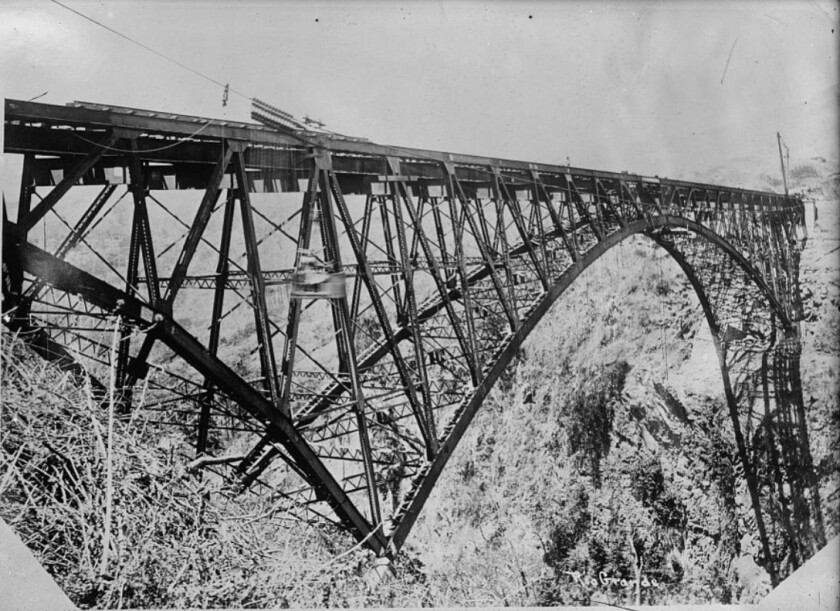
Viaduct over Rio Grande, Costa Rica in the early 1900s.
Contributed / US Library of Congress
“The construction of those railways took so many lives that local tradition in both the Congo and Costa Rica told of a black body buried beneath each railroad tie,” Colby wrote.
Sixteen years after he started, Keith still had a labor shortage problem. He brought in workers from Italy, who later went on strike, and from Jamaica, who were punished if they protested, according to Colby.
Nearly 20 years after the project started, the Atlantic Railroad was completed in December 1890. Keith stood poised to reap the reward of an overarching monopoly with the birth of the first banana republic, a derogatory term that refers to a country’s economy dependent on revenue from exporting a single commodity.
He became de facto owner of the railway and was Costa Rica’s largest landowner. Government concessions gave him power over sanitation, infrastructure and the ports.
The United Fruit Company was born, and in a few years, Keith was exporting a million stems of bananas every year into the United States.
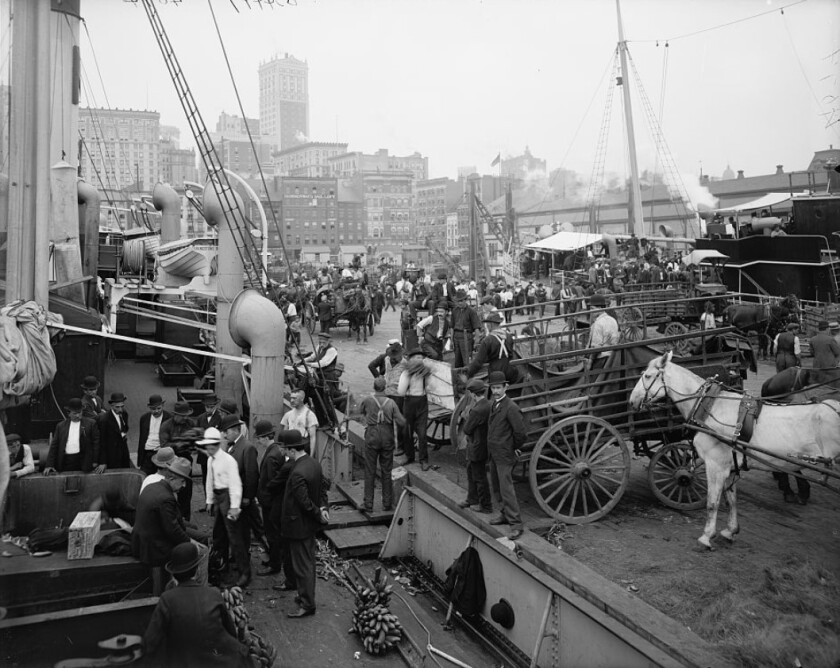
The so-called Banana Docks in New York City in the early 1900s. Bananas were typically first sent to New Orleans, Louisiana, and then shipped across the United States. In the early 20th century, immigrants were welcomed off the boats from Europe with a banana, which for many was the first time they had ever seen the tropical fruit.
Contributed / US Library of Congress
Keith signed similar contracts across Central America, and his grip tightened around those who worked for him. With much of his workforce residing on isolated banana farms, Keith and the United Fruit Company became the sole source of food and consumer goods.
Disguised as a “civilizing mission,” Keith built homes, churches, and general stores, and began paying laborers not with money, but in company scrip — provisional certificates — redeemable only at company commissaries, according to Colby.
United Fruit’s enterprise depended on a racially-segmented labor force,
according to James Martin in his 2013 study
“Becoming Banana Cowboys.” White men supervised colored men, and in order to recruit more workers, the company fostered a corporate culture of what it meant to be an “American man in the tropics,” a masculine professional identity wrapped in the language of frontier adventure, Martin wrote.
“The racialised division of labor and the Jim Crow social regime some observed in United Fruit towns led to such conclusions,” Martin wrote.
White managers assigned Black workers the most dangerous tasks, and turned a blind eye to the human costs. Yellow fever, malaria, tuberculosis and pneumonia plagued all colored workers, and managers only treated white workers, saying such ailments were proof of Black inferiority, according to Colby.
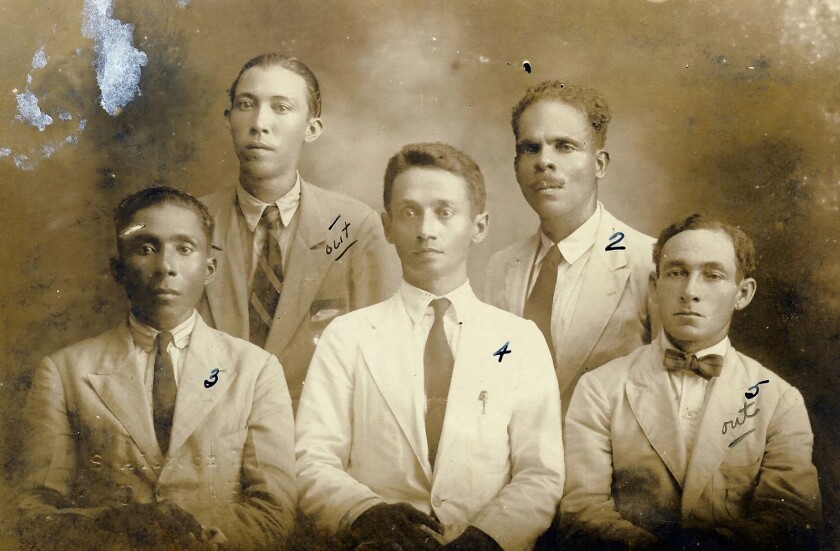
United Fruit Company strike leaders that organized to help workers on banana plantations in Colombia in 1928. Some reports indicate that more than 1,000 men, women and children were killed after the Colombian Army became involved.
Contributed / Encyclopedia Britannica
By 1910, deplorable working conditions led to a massive strike, and at the behest of United Fruit, the Costa Rican government dispatched 250 troops to arrest strike leaders.
Racial tension continued to ripple across lands owned by United Fruit. From Guatemala, Costa Rica, Cuba and Colombia, independent investigators showed proof that United Fruit’s workers were being mistreated, claims the company denied, according to Colby.
On December 5, 1928, when a strike of more than 25,000 plantation workers began in the town of Cienaga, Colombia, United Fruit asked the Colombian government for help, and they obliged, sending an army contingent of 300 soldiers.
While about 1,500 strikers and their families camped in the town square, troops set up machine gun posts on rooftops and square corners, closing off streets.
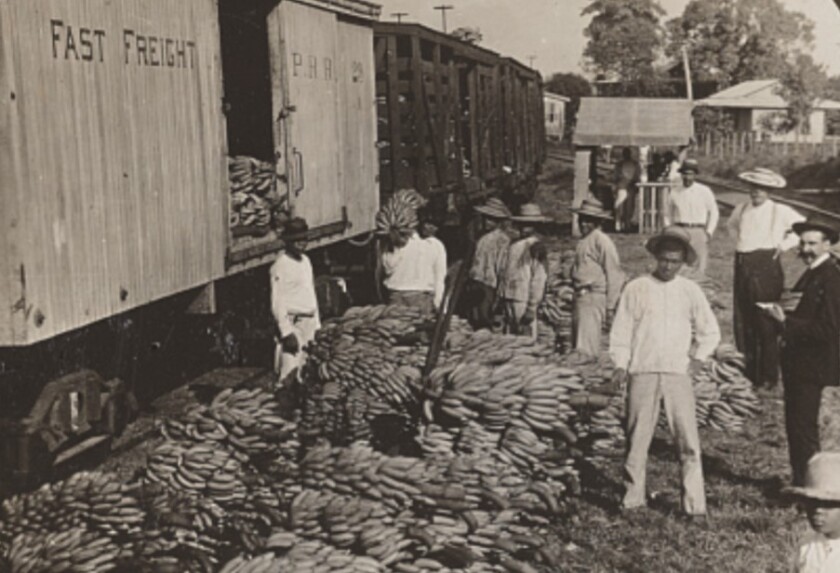
Loading bananas onto a train in Costa Rica in 1904.
Contributed / US Library of Congress
“Five minutes later, following
three short bugle blasts, soldiers fired machine guns into the crowd,” Encyclopedia Britannica reported. What became known as the banana massacre began.
Violence continued for days as the military attempted to kill union leaders who survived the first attack. By the end of the massacre, some reports indicated the death toll exceeded 1,000 people, according to Encyclopedia Britannica.
About a year later, Keith died. He was 81 years old. A story about Keith in the Minneapolis Star Tribune hailed the Banana King as an American hero.
“Everybody said he was doomed to failure … but he made the swamp blossom as the rose, and hammered out a civilization almost single-handed in what was a lonely, remote region,” the Minneapolis Star Tribune reported in 1929. “No man did more than he to steer the destinies of the Caribbean countries.”
As founder of the United Fruit Company, Keith invested more than $200 million into his fruit empire, ensuring that he controlled the farming, transportation and export process all the way to the rural general store in Norma, where Anton Nelson was bitten by a tarantula hiding in a banana bunch.
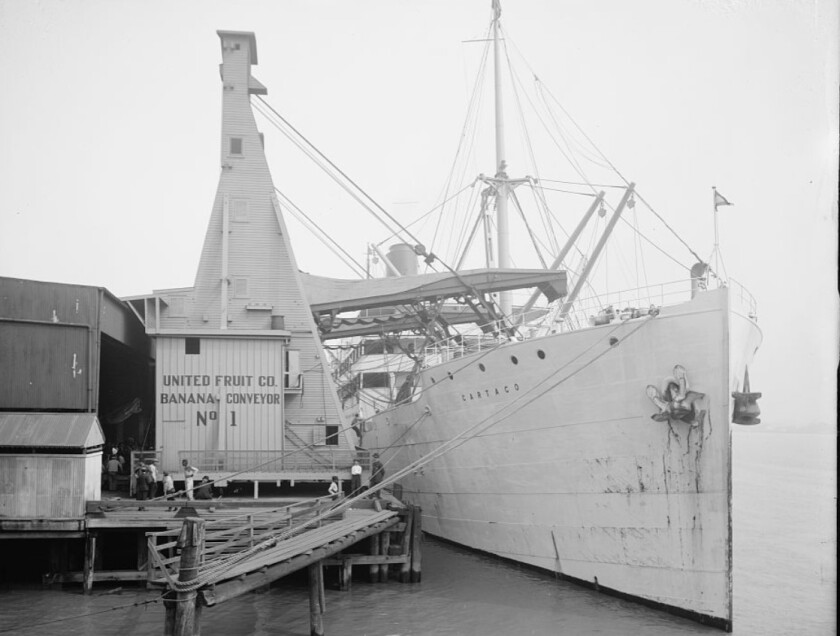
United Fruit Company banana loading dock and ship in 1910, which was already importing millions of bananas into America at this time.
Contributed / US Library of Congress
United Fruit Company’s influence in Central America remained after Keith’s death, but began to weaken in the 1950s after the US government filed an antitrust lawsuit against them, Colby wrote.
The company viewed the lawsuit as a betrayal, but still had enough influence to petition the Central Intelligence Agency in 1959 to fight what they called communism in Guatemala during the height of McCarthyism and the Red Scare,
according to a declassified CIA
report. Reportedly, the Soviet Union was influencing elected President Jacobo Arbenz’s government. United Fruit smuggled weapons and housed coup leaders on their properties in a CIA-sponsored coup that used Honduran militia to overthrow Arbenz, according to Colby.
“However, this did not satisfy United Fruit. They wished to make an example of Guatemala, so their other host nations wouldn’t dare oppose them,” according to Lindsey Morey, author of “Blood for Bananas.”
“They had the CIA pay off the Guatemalan military so they would let the Honduras militia win. After the victory, the leader of the Honduran militia, Castillo Armas, was appointed as president of Guatemala and Armas was a puppet of United Fruit Company for the rest of his term,” Morey wrote.
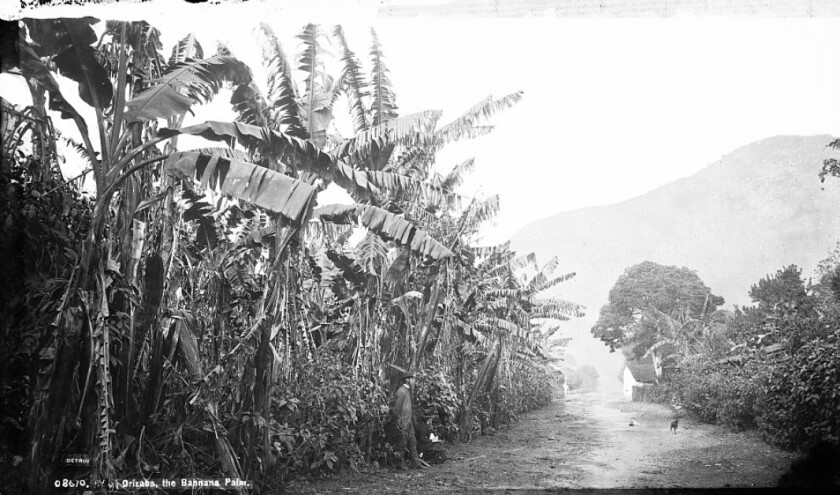
Banana trees in Central America around 1890s.
Contributed / US Library of Congress
Other corporations followed United Fruit’s tactics in the 1960s and 1970s, instigating similar coups in the Democratic Republic of the Congo and Chile.
Continued unrest in the so-called banana republics, hurricanes and the banana disease further weakened United Fruit until it merged with a meatpacking plant to become United Brands.
In 1984, the company re-branded as Chiquita, and began to withdraw from direct cultivation of bananas to work privately with indigenous planters.
At the height of United Fruit’s power, however, the company was viewed by many as a vanguard of modern civilization.
“That civilization featured a corporate colonial culture based on racial hierarchy and labor segmentation… Yet its legacy remained, not only in the abandoned banana towns and unhealed racial wounds of Central America and the British Caribbean, but in the pivotal role that corporate power would continue to play in US expansion, in Latin America and beyond,” Colby wrote.
Source link : http://www.bing.com/news/apiclick.aspx?ref=FexRss&aid=&tid=6716a8e8fbd24b9f815ce2d4b4065058&url=https%3A%2F%2Fwww.thedickinsonpress.com%2Fnews%2Fthe-vault%2Ffrom-tarantula-bites-to-corporate-greed-the-dark-history-of-a-banana-empire&c=6508876760825320149&mkt=en-us
Author :
Publish date : 2024-10-21 07:50:00
Copyright for syndicated content belongs to the linked Source.

